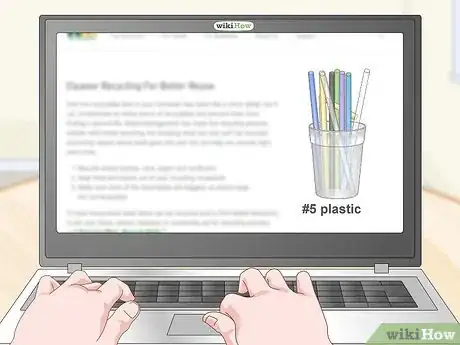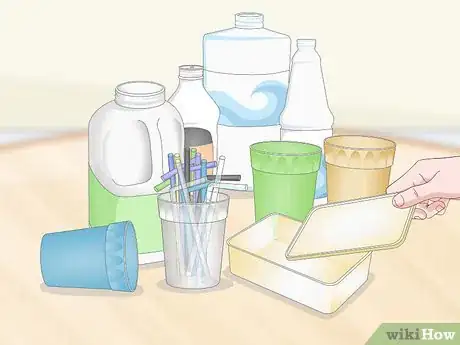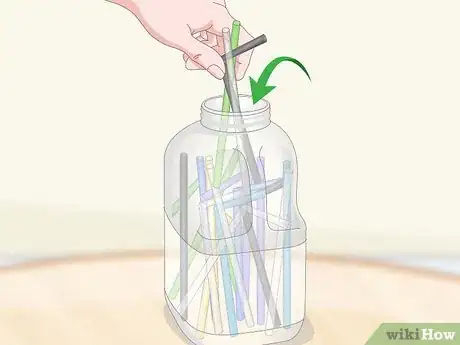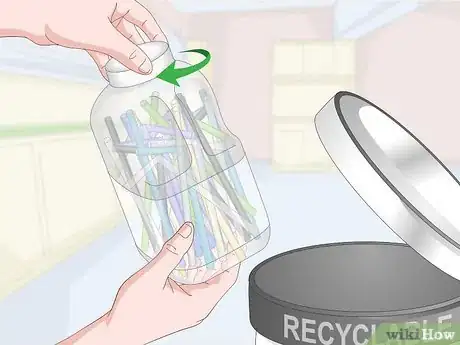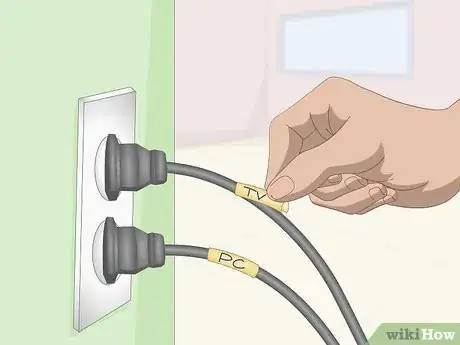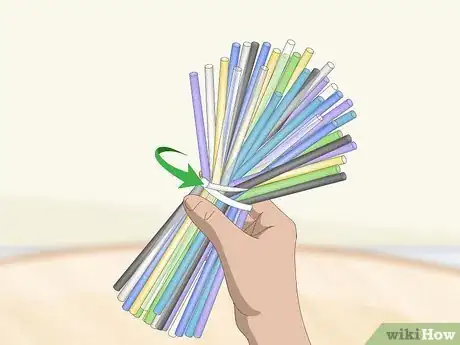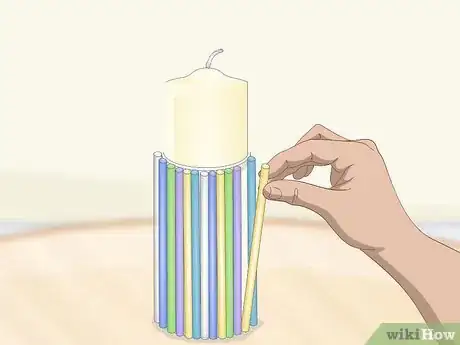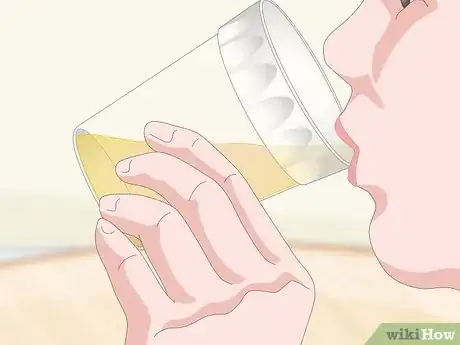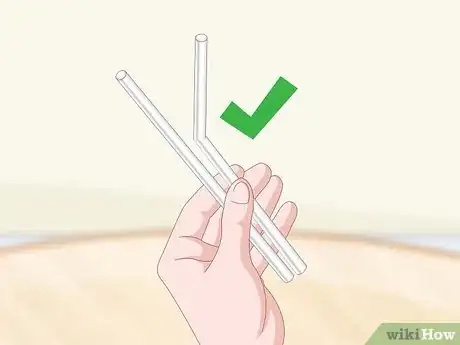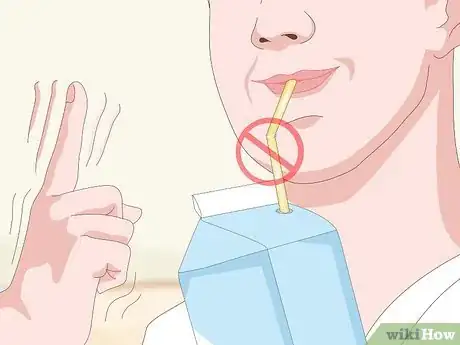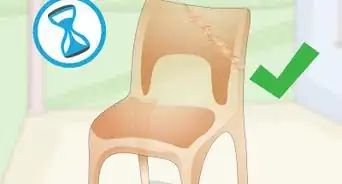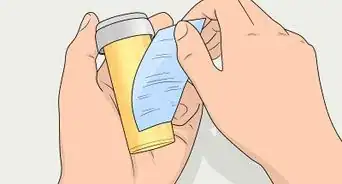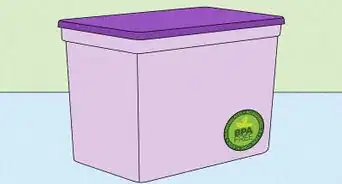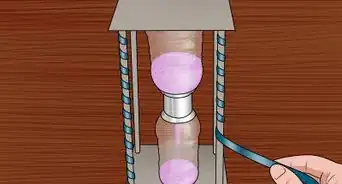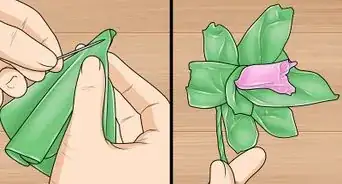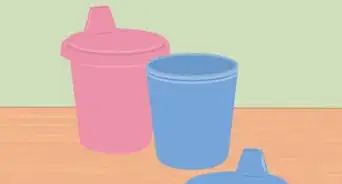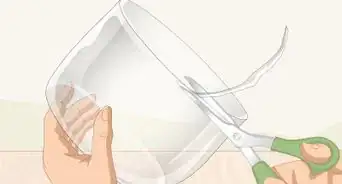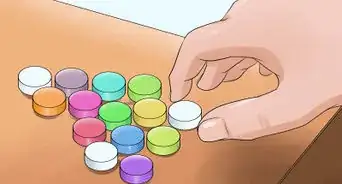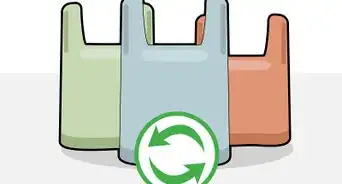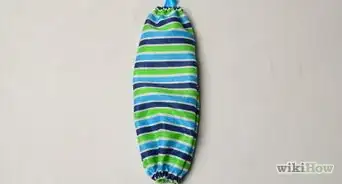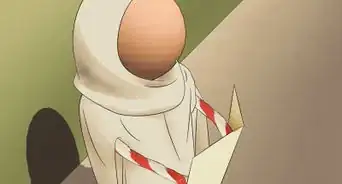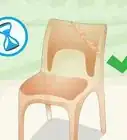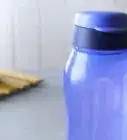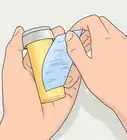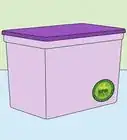This article was co-authored by Kathryn Kellogg and by wikiHow staff writer, Hunter Rising. Kathryn Kellogg is the founder of goingzerowaste.com, a lifestyle website dedicated to breaking eco-friendly living down into a simple step-by-step process with lots of positivity and love. She's the author of 101 Ways to Go Zero Waste and spokesperson for plastic-free living for National Geographic.
There are 8 references cited in this article, which can be found at the bottom of the page.
This article has been viewed 77,438 times.
Plastic straws aren’t biodegradable, meaning that they last a long time after you throw them away. Straws that aren’t thrown away properly find their way into the environment and are harmful to wildlife around the world. While you can always put the straws in with your regular trash, you may be able to recycle them so the plastic is reused instead.[1] If you want to reduce the number of straws you use overall, there are many environmentally-friendly alternatives you can try.[2]
Steps
Recycling Plastic Straws
-
1Check if your local waste management accepts #5 plastics.[3] Most plastic straws are made out of polypropylene, which is considered a #5 recyclable plastic. Contact your city’s waste management service or visit their website to see what types of plastics they’re able to process. If they are able to do #5 plastics, then you can collect and recycle your straws in the recycling bin.[4]
- Search online for other recycling services in your area if your primary waste maintenance doesn’t accept #5 plastics. Other independent centers may be able to recycle the plastic for you.
-
2Save a larger plastic container made from the same material as the straw. Many takeout food containers or margarine tubs are made with #5 plastics and are able to use for collecting straws. Double-check the bottom of a plastic container to confirm that they’re made of #5 plastics so your recycling is sorted correctly. Rinse out the container if there’s any leftover food before setting it near your trash bin.[5]
- Straws that aren’t in a container are not usually recycled because they’re too small and can damage the processing machines at the recycling center.
- Collect multiple containers so you always have another to use after you throw away the first one.
Advertisement -
3Collect the straws in the plastic container when you use them. Whenever you use a straw, put it inside the plastic container you saved rather than in a trash or recycling bin. If you need to, use a pair of scissors to cut the straws into smaller pieces so they fit inside the container easily. Keep putting your plastic straws in the container until it’s full.[6]
-
4Seal the plastic container before putting it in your recycling bin. Once your container is full of plastic straws, put the lid on top and seal it shut so the straws don’t spill out. Put the container in your regular recycling bin before the next pickup day so the city’s waste management service can collect it and properly recycle it.[7]
- If your recycling service doesn’t collect #5 plastics, then you may need to drop them off at a recycling center instead.
Reusing Straws
-
1Label cords with pieces from plastic straws. If you have a lot of cords or plugs near your desk, cut a plastic straw into 1 in (2.5 cm) long pieces. Use a pair of scissors to make a cut through one side of the straw piece so you can easily wrap it around a cord. Use a pen or marker to label what the cord is for so you know what you’re plugging in at a glance.[8]
- If the straw doesn’t stay in place around the cord, then use a piece of tape to secure it.
-
2Make a mock bouquet with straws and zip ties. Put a handful of colored straws in a glass so they gather in a cylindrical shape. Secure a zip tie around the centers of the straws and pull it tight to squeeze them together. As you tighten the zip tie more, the centers of the straws will bend and make the ends stick out in multiple directions so it looks like a “flower.” Make multiple “flowers” and put them in a vase or glass to display your bouquet.[9]
- You can choose to use multiple colors of straws, or use matching colors to make your “flower” look uniform.
-
3Decorate the outside of a vase or candle holder for a colorful centerpiece. Apply a strip of double-sided tape around an empty vase or candle holder. Press the straws onto the tape one by one so the bottoms of the straws are flush with the bottom of the vase. Continue adding straws all the way around the glass and then cut them with scissors so they’re level with the top of the vase.[10]
- Make sure the straws aren’t over the flame of the candle or else they will melt and produce fumes that may be harmful.
Preventing Straw Waste
-
1Enjoy drinks without a straw when you can.[11] Don’t put a lid on a cup that requires you to use a straw to drink it. Instead, take the lid off of the cup and sip the drink so you don’t have to use a straw. If restaurants offer you a straw, refuse it so it doesn’t need to be thrown away or produce unnecessary waste.[12]
- If you need to transport a drink, put a lid on it so it doesn’t spill and take the lid off when you get to your location.
- Some companies will only give you a straw if you request one.
-
2Buy reusable straws to reduce the use of plastic. Search online or at kitchen stores for reusable straws made of stainless steel, bamboo, or glass so you can use them multiple times.[13] Get a few straws that you can bring with you and some that you take with you when you travel. Bring a reusable straw with you to restaurants or cafes so you can still enjoy your drink without using your plastic straw.[14]
- Some restaurants also offer compostable paper straws that you can use.
- Be sure to wash the straw after you use it so bacteria doesn’t grow inside.
-
3Talk to your friends about limiting their straw use.[15] If you see your friend using a plastic straw, ask them if they know about the negative effects it could have on the environment after they throw it away. Be open to a discussion with them about what they can do to prevent using plastic straws or how they can help spread awareness with you. Continue talking with others so they’re mindful about when they use straws in the future.[16]
- Don’t make people feel ashamed about using plastic straws if they want or need to.
Community Q&A
-
QuestionDoes cutting a straw into small pieces make it less of a problem for the environment?
 Community AnswerNo, that makes a whole lot more plastic pieces to float around the environment. Instead, it is better to avoid using straws. If you cut straws into smaller pieces, they will be more harmful to creatures and the ecosystem. It also won't cause them to degrade faster, because size doesn't affect rate of degradation.
Community AnswerNo, that makes a whole lot more plastic pieces to float around the environment. Instead, it is better to avoid using straws. If you cut straws into smaller pieces, they will be more harmful to creatures and the ecosystem. It also won't cause them to degrade faster, because size doesn't affect rate of degradation. -
QuestionWhat can I do with old plastic straws?
 Drew Hawkins1Community AnswerThe best thing you can do with your old plastic straws so they don't negatively impact the environment is to properly recycle them. Collect all of your straws into a recyclable container such as a food container or a plastic bag. Seal the container tightly so none of the straws can fall out as they're being transported to a recycling plant. Place the sealed container into your recycling bin.
Drew Hawkins1Community AnswerThe best thing you can do with your old plastic straws so they don't negatively impact the environment is to properly recycle them. Collect all of your straws into a recyclable container such as a food container or a plastic bag. Seal the container tightly so none of the straws can fall out as they're being transported to a recycling plant. Place the sealed container into your recycling bin. -
QuestionCan I burn plastic straws?
 Drew Hawkins1Community AnswerWhile it may seem like a good idea to burn your plastic straws to get rid of them, the pollutants that are produced are harmful for the environment and could potentially be dangerous for you if you breathe in too much of it. The best thing you can do with your plastic straws is recycle them to keep them out of the environment. If you don't have a recycling bin at your home, look online for a recycling location you can bring your straws.
Drew Hawkins1Community AnswerWhile it may seem like a good idea to burn your plastic straws to get rid of them, the pollutants that are produced are harmful for the environment and could potentially be dangerous for you if you breathe in too much of it. The best thing you can do with your plastic straws is recycle them to keep them out of the environment. If you don't have a recycling bin at your home, look online for a recycling location you can bring your straws.
Warnings
References
- ↑ https://www.seattle.gov/utilities/services/where-does-it-go?item=straws
- ↑ Kathryn Kellogg. Sustainability Specialist. Expert Interview. 28 June 2019.
- ↑ Kathryn Kellogg. Sustainability Specialist. Expert Interview. 28 June 2019.
- ↑ https://www.trvst.world/inspiration/how-to-dispose-of-plastic-straws/
- ↑ https://www.trvst.world/inspiration/how-to-dispose-of-plastic-straws/
- ↑ https://www.trvst.world/inspiration/how-to-dispose-of-plastic-straws/
- ↑ https://www.trvst.world/inspiration/how-to-dispose-of-plastic-straws/
- ↑ https://youtu.be/jsuBySKl5QE?t=329
- ↑ https://youtu.be/jsuBySKl5QE?t=52
- ↑ https://youtu.be/jsuBySKl5QE?t=161
- ↑ Kathryn Kellogg. Sustainability Specialist. Expert Interview. 28 June 2019.
- ↑ https://spoonuniversity.com/healthier/why-you-should-stop-using-plastic-straws
- ↑ Kathryn Kellogg. Sustainability Specialist. Expert Interview. 28 June 2019.
- ↑ https://spoonuniversity.com/healthier/why-you-should-stop-using-plastic-straws
- ↑ Kathryn Kellogg. Sustainability Specialist. Expert Interview. 28 June 2019.
- ↑ https://treadingmyownpath.com/2018/06/21/plastic-straw-alternatives/
- ↑ https://spoonuniversity.com/healthier/why-you-should-stop-using-plastic-straws
- ↑ Kathryn Kellogg. Sustainability Specialist. Expert Interview. 28 June 2019.

